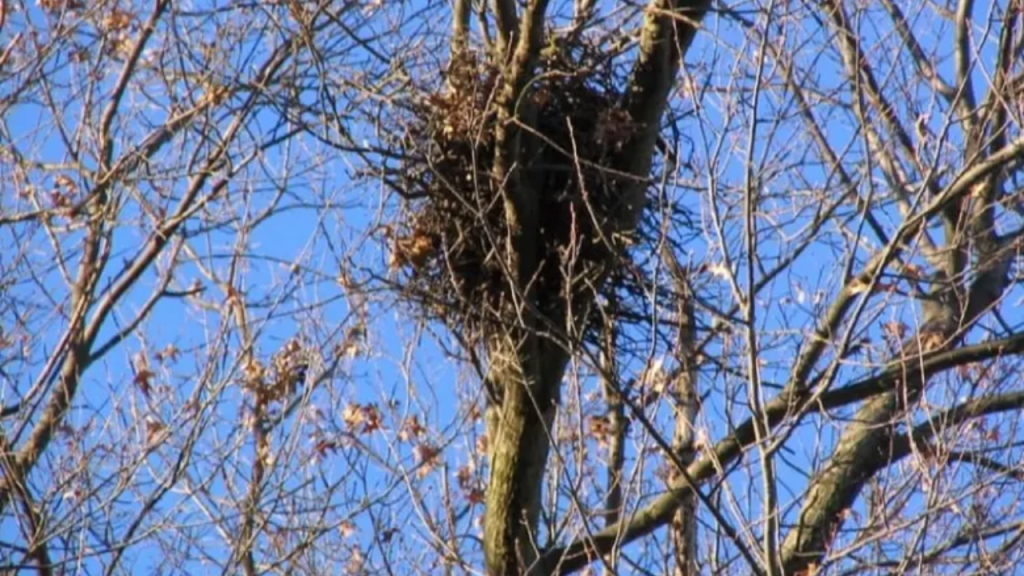
If you’ve ever taken a walk through New York’s parks or neighborhoods and noticed large, round clumps of leaves hanging high in the trees, you might have thought they were bird nests. However, it turns out these mysterious leaf balls aren’t bird nests at all. They are, in fact, the homes of squirrels. Let’s take a closer look at these fascinating structures and uncover the truth behind them.
What Are These Leaf Balls?
The round clumps of leaves that you often see in trees are known as dreys, which are the nests of squirrels. These nests are built by various squirrel species, including the Eastern Gray Squirrel, Red Squirrel, and Northern and Southern Flying Squirrels. Squirrel dreys are not just piles of leaves; they are carefully constructed shelters made of twigs, dry leaves, grass, and other natural materials like moss and pine needles. Squirrels build these nests to create a safe and insulated space where they can rest, sleep, and shelter themselves from the elements.
These dreys are typically constructed in the forks of trees, often as high as 20 feet or more above the ground. The positioning of the nests helps keep them away from predators and provides a relatively safe and quiet space for squirrels to thrive in. Dreys can also be built in tree cavities, depending on the species of squirrel and their environment.
Why Are Dreys More Visible in Winter?
One of the reasons why these leaf balls are so noticeable is that they are most visible during the colder months of the year. In fall, many trees begin shedding their leaves, and the dense foliage that once concealed the dreys disappears. This allows the nests to become more conspicuous, especially when the dreys are still composed of dried leaves and twigs. As a result, these squirrel nests stand out against the bare branches of the trees.
In spring and summer, the leaves on the trees fill in, and the dreys become harder to spot. However, once the cold weather hits and the leaves fall off, the dreys are much more noticeable.
Do Squirrels Use Dreys in Winter?
While dreys provide a convenient and relatively safe shelter for squirrels, especially during the warmer months, squirrels typically seek more sheltered and insulated spaces during the winter. Dreys are made of natural materials that do not provide as much protection from the cold as other options. During the winter, many squirrels turn to tree cavities, which offer better insulation, or even human-made structures, such as attics, to stay warm and protected from the harsh weather.
Despite this, dreys are still used by squirrels throughout the year, particularly by younger squirrels and in milder climates. In the spring and summer, dreys provide a good place to rest or raise their young.
Different Squirrel Species and Their Nesting Habits
Different species of squirrels have varying nesting habits. Red squirrels, for example, tend to build their dreys in coniferous trees, such as pines and spruces. These trees offer dense foliage that can help protect the nests from wind and rain. In addition to building dreys, red squirrels may also use tree cavities for shelter.
On the other hand, flying squirrels—which are nocturnal—also build their dreys in trees, though they are less commonly seen during the day. Flying squirrels play an important role in the environment, as they help disperse seeds and mycelium, which aids in the growth of fungi and plants.
While flying squirrels might not be as visible as their tree-dwelling cousins, their role in the ecosystem is just as crucial. They help maintain biodiversity by promoting the growth of plants and trees, which are essential to a healthy ecosystem.
How Can You Spot a Drey?
Now that you know what dreys are, you may be wondering how to spot them. These nests are typically built in the upper branches of trees, so looking up while walking in areas with dense tree cover is a good place to start. Dreys are often ball-shaped and may be partially hidden by leaves or branches, making them harder to spot in the summer months.
When searching for dreys, pay attention to trees with thick branches and lots of foliage. Oaks, maples, and pines are common trees where you might find these squirrel homes.
